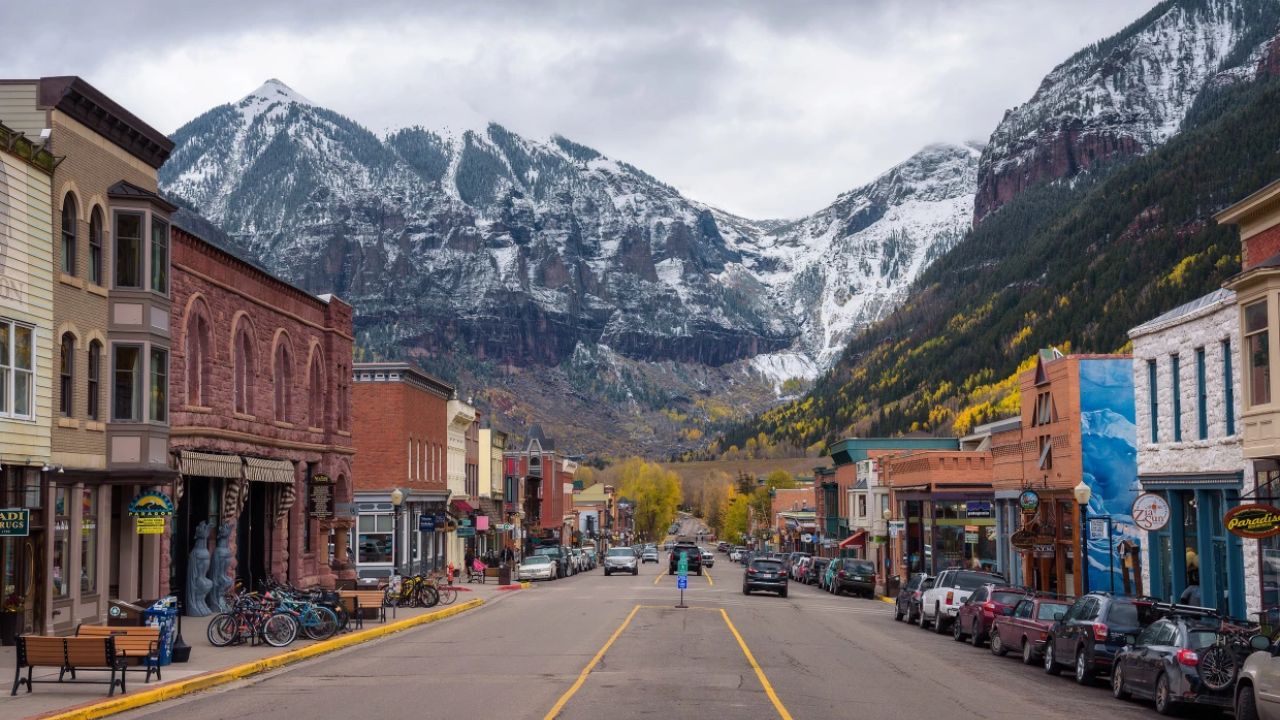Colorado is a state with many attractions, such as its scenic mountains, diverse wildlife, and legal cannabis. However, not all of its towns are appealing to residents and visitors alike. Some towns are facing challenges such as high living costs, low job opportunities, environmental issues, or social problems that make them less desirable to live in. Here are seven Colorado towns that people are fleeing as soon as possible, according to various sources.
1. Denver
The capital city, Denver, has experienced the most substantial exodus. According to the U.S. Census Bureau, Denver lost 10,000 residents in 2023, more than any other city in the state. The main reasons for this are the high housing prices, the traffic congestion, the air pollution, and the crime rate. Denver’s median home value was $592,000 in 2023, up 14.6% from the previous year.
The city also ranked as the 12th worst in the nation for traffic, with drivers spending an average of 62 hours per year in congestion. Denver also had the highest ozone levels in the state, posing health risks for its residents. Additionally, Denver had a violent crime rate of 7.65 per 1,000 people in 2023, higher than the national average of 3.7.
2. Boulder
Known for its vibrant arts scene and outdoor recreational opportunities, Boulder has also seen a notable outflow of residents. According to the U.S. Census Bureau, Boulder lost 4,000 residents in 2023, the second-highest number in the state. The main reasons for this are the high living costs, the lack of diversity, and the political polarization.
Boulder’s median home value was $857,000 in 2023, up 15.3% from the previous year. The city also had the highest cost of living index in the state, at 151.9, compared to the national average of 100. Boulder also had a low racial diversity, with 88.5% of its population being white in 2020. Moreover, Boulder had a reputation for being a liberal enclave, which may alienate some conservative residents or newcomers.
3. Adams County
Located in the Denver metro area, Adams County has witnessed a similar pattern. According to the U.S. Census Bureau, Adams County lost 3,000 residents in 2023, the third-highest number in the state. The main reasons for this are the low income, the high poverty, and the poor education.
Adams County’s median household income was $66,000 in 2020, lower than the state average of $77,000. The county also had a high poverty rate of 13.4% in 2020, higher than the state average of 9.3%. Furthermore, Adams County had a low high school graduation rate of 77.8% in 2019, lower than the state average of 81.1%.
4. Arapahoe County
Another county in the Denver metro area, Arapahoe County has also experienced a population decline. According to the U.S. Census Bureau, Arapahoe County lost 2,000 residents in 2023, the fourth-highest number in the state. The main reasons for this are the high taxes, the low safety, and the aging infrastructure.
Arapahoe County had a high property tax rate of 0.63% in 2020, higher than the state average of 0.52%. The county also had a high fire risk, with 28% of its land area being in the high or very high fire hazard zones. Moreover, Arapahoe County had an aging infrastructure, with 42% of its bridges being structurally deficient or functionally obsolete in 2019.
5. Jefferson County
Yet another county in the Denver metro area, Jefferson County has also seen a population decrease. According to the U.S. Census Bureau, Jefferson County lost 1,000 residents in 2023, the fifth-highest number in the state. The main reasons for this are the high living costs, the low job growth, and the environmental issues.
Jefferson County’s median home value was $507,000 in 2023, up 13.2% from the previous year. The county also had a low job growth rate of 0.6% in 2020, lower than the state average of 1.2%. Furthermore, Jefferson County had a high water stress, with 82% of its water supply being withdrawn for human use in 2019.
6. Colorado Springs
The second-largest city in the state, Colorado Springs has also faced a population loss. According to the U.S. Census Bureau, Colorado Springs lost 500 residents in 2023, the sixth-highest number in the state. The main reasons for this are the low wages, the high crime, and the natural disasters. Colorado Springs’ median household income was $63,000 in 2020, lower than the state average of $77,000.
The city also had a high crime rate of 6.23 per 1,000 people in 2023, higher than the national average of 3.7. Additionally, Colorado Springs had a high risk of natural disasters, such as wildfires, floods, and landslides, that damage its properties and infrastructure.
7. Fort Collins
The fourth-largest city in the state, Fort Collins has also suffered a population drop. According to the U.S. Census Bureau, Fort Collins lost 300 residents in 2023, the seventh-highest number in the state. The main reasons for this are the high housing prices, the low affordability, and the social issues. Fort Collins’ median home value was $462,000 in 2023, up 12.7% from the previous year.
The city also had a low affordability index of 3.6 in 2020, meaning that the median income was only 3.6 times the median home value, compared to the national average of 4.0. Moreover, Fort Collins had a high homelessness rate of 28.6 per 10,000 people in 2020, higher than the state average of 19.1.
Conclusion
Colorado is a beautiful state with many attractions, but it also has some drawbacks that make some of its towns less appealing to live in. Some of these drawbacks are the high living costs, the low job opportunities, the environmental issues, or the social problems that affect the quality of life of its residents.
These factors have contributed to the population decline of some of the towns in the state, as people seek better alternatives elsewhere. However, not all of the towns in Colorado are losing residents. Some towns, such as Greeley, Aurora, and Pueblo, have gained population in recent years, due to their lower living costs, higher job growth, or more diverse culture. Therefore, Colorado is a state with a mixed picture, where some towns are thriving and others are struggling.

